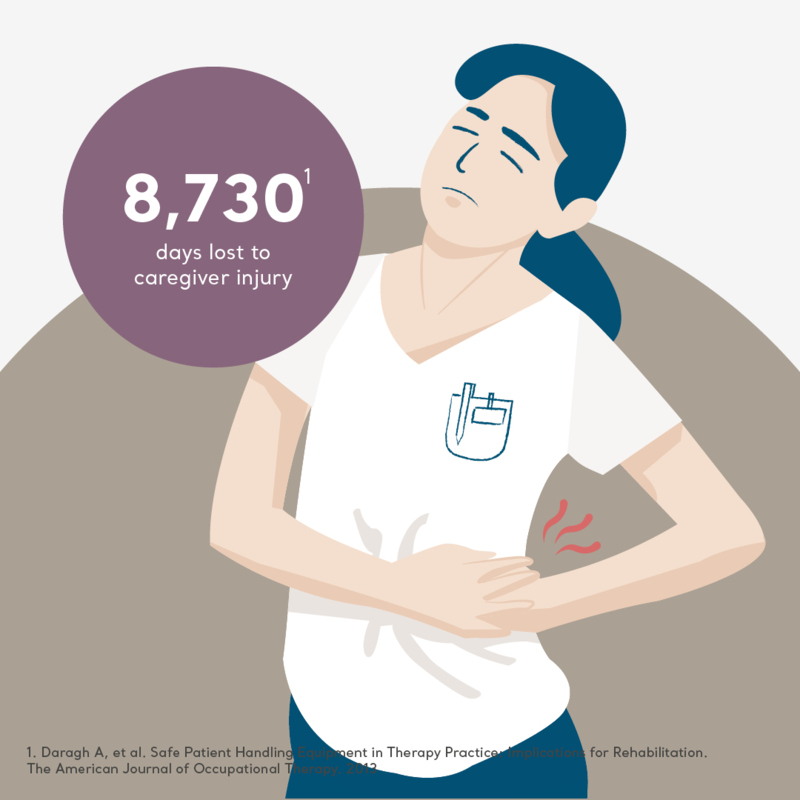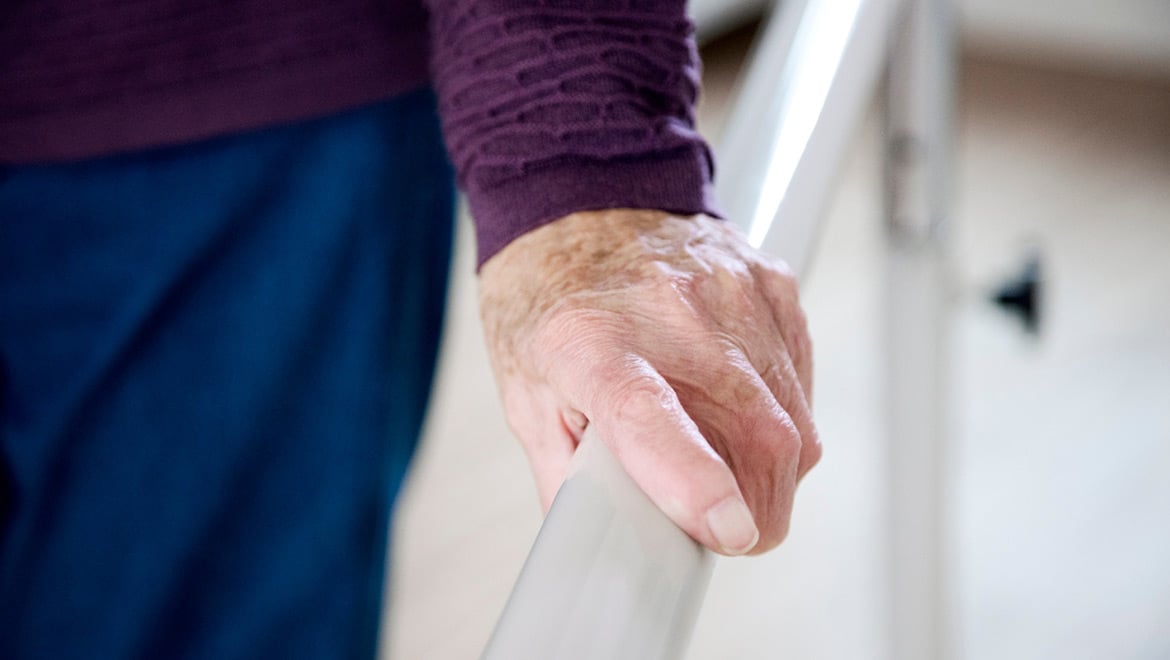Minimising caregiver injuries with smarter patient handling solutions
Healthcare professionals dedicate their lives to patient care, yet many face a significant occupational hazard – injuries caused by manual patient handling.¹
As such, the availability of the correct equipment is one of many barriers to effective in the prevention of caregiver injuries.²

The hidden costs of caregiver injuries
When caregivers sustain injuries, the consequences extend far beyond just personal discomfort.³
- Lost workdays and staff shortages are often caused by injured caregivers requiring extended time off, subsequently increasing workloads for remaining staff.
- Increased operational costs, often caused by compensation claims and staff turnover, which in turn puts further strain on healthcare facilities.
- Diminished patient care due to caregivers often being unable to perform routine care flow tasks as efficiently or as safely.
Why is manual patient handling such a risk?
Despite advancements in patient handling technology, many caregivers still rely on manual lifting and repositioning techniques due to outdated or inadequate equipment. However, these traditional methods come with significant risks, both for caregivers and patients.⁴
Over time, manual handling increases the likelihood of sudden weight shifts or patient falls, creating hazardous situations that can result in serious injuries.
Without proper support, caregivers are left vulnerable to musculoskeletal disorders (MSDs), which are a common cause of workplace absences in healthcare.⁵ In fact, 59% of musculoskeletal injuries among caregivers result from repositioning or transferring patients, as well as from preventing falls.⁶
Maxi Move® 5 – a smarter way to protect caregivers
To address these challenges, Maxi Move® 5 is designed with advanced ergonomic features that reduce physical strain and promote safer, more efficient patient transfers.
By integrating next-gen lifting technology, it allows caregivers to focus on providing quality care while minimising injury risks. Key features include:
- Arjo Motion Assist™ technology, which reduces the effort required to push and pull, allowing caregivers to manoeuvre patients more easily – even in confined spaces.
- Powered Dynamic Positioning System (PDPS), which provides smooth, controlled repositioning with minimal physical strain, ensuring precise movement.
- Easy, single-caregiver operation enabling one caregiver to prioritise safety while performing patient transfers, reducing reliance on additional staff.
- Infection control benefits such as smooth, easy-to-clean surfaces that help prevent cross-contamination.
The industry-wide shift towards safer transfers
With rising awareness of workplace injuries among healthcare professionals, more facilities are transitioning to mechanical lifting solutions as part of their injury prevention programs. One biomechanical laboratory study and psychophysical evaluation showed that mechanical lifts⁷:
- Reduce back-compressive forces on nursing personnel injury rates, by an estimated 60%
- Remove two-thirds of the lifting activities per transfer.
- Increase residents’ perceived comfort and security, compared with being manually lifted
Experience Maxi Move® 5 in action
Discover how Maxi Move® 5 can transform patient handling in your facility, prioritising both caregiver safety and patient well-being. At Arjo, feeling is believing. Book a live demo today to experience the future of safer, more efficient transfers.
References
- https://www.arjo.com/int/about-us/empowering-movement/protect-the-wellbeing-of-caregivers/
- Richardson A, Gurung G, Derrett S, Harcombe H. Perspectives on preventing musculoskeletal injuries in nurses: A qualitative study. Nursing Open. 2019;6(3):915-929. Published 2019 Apr 13. doi:10.1002/nop2.272.
- Wilkinson, C., Ferreira, M. L., & Latimer, J. (2010). Cost of musculoskeletal injuries in the healthcare sector. Journal of Occupational Health and Safety - Australia and New Zealand, 26(3), 199-205.
- American Nurses Association. Health and Safety Survey. 2011.
- Richardson et al. Perspectives on preventing musculoskeletal injuries in nurses: A qualitative study. Nursing Open. 2019. 6;915-929
- Daragh A, et al. Safe Patient Handling Equipment in Therapy Practice: Implications for Rehabilitation. The American Journal of Occupational Therapy. 2013
- Alamgir, H., Li, O. W., Yu, S., Gorman, E., Fast, C., & Kidd, C. (2009). Evaluation of ceiling lifts: Transfer time, patient comfort and staff perceptions. Injury, 40(9), 987–992. https://doi.org/10.1016/j.injury. 2008.12.002.





